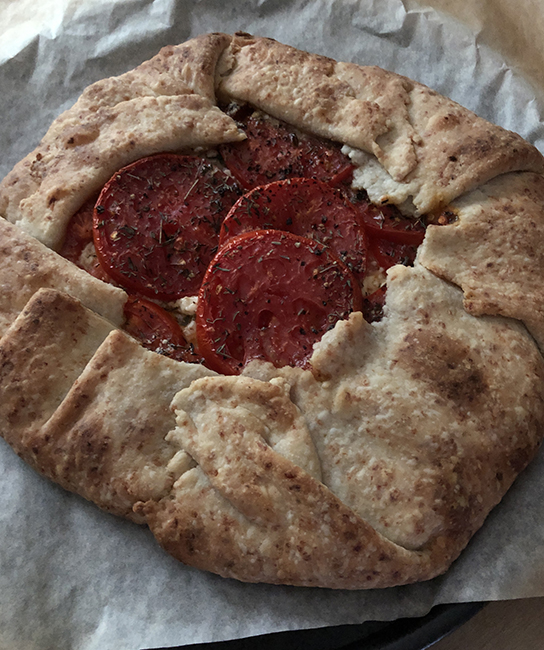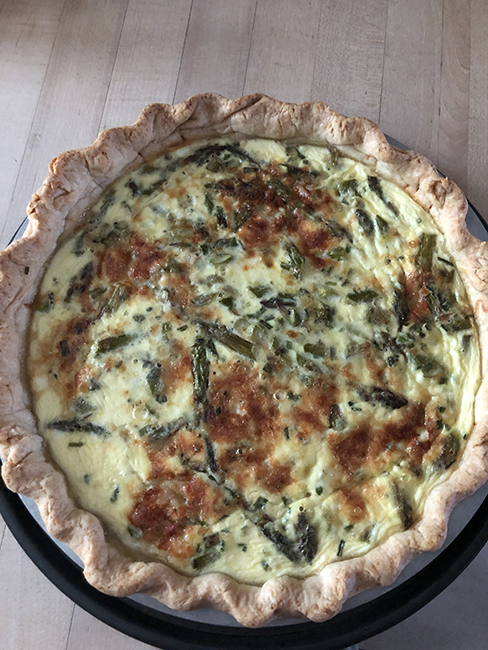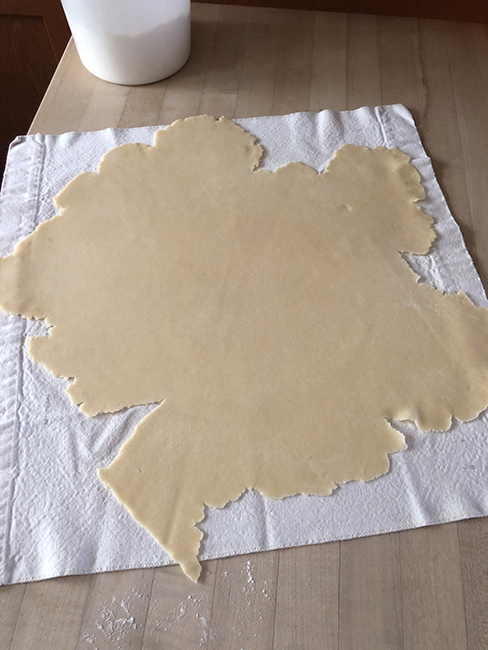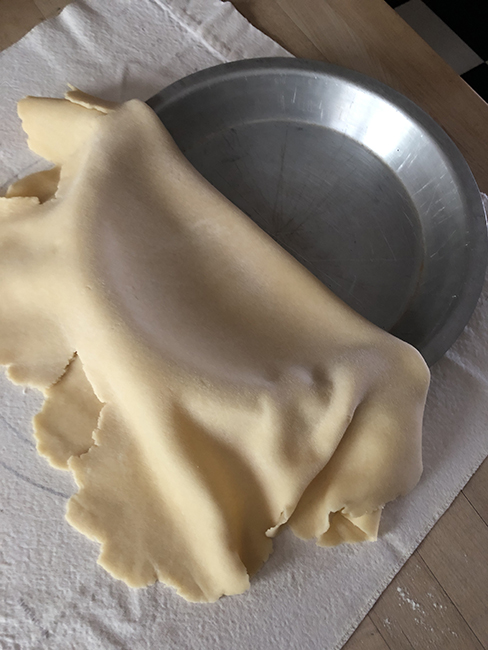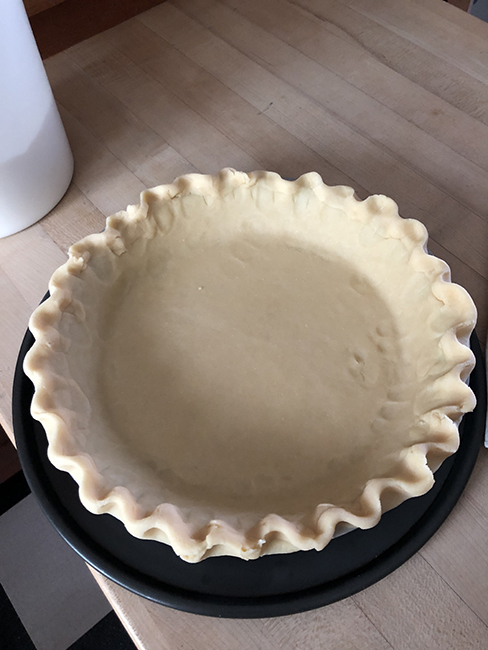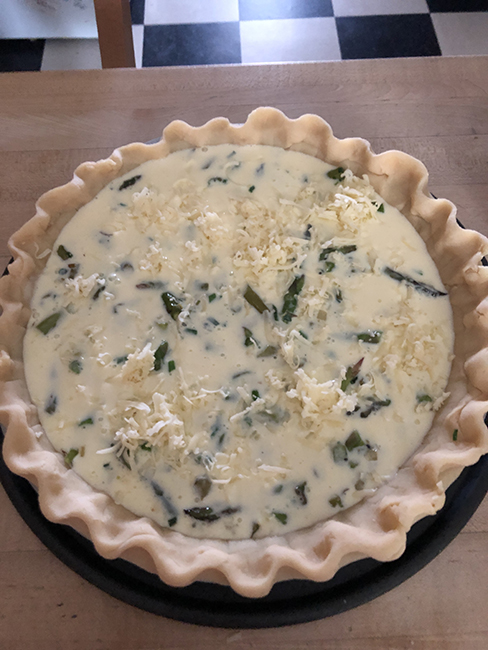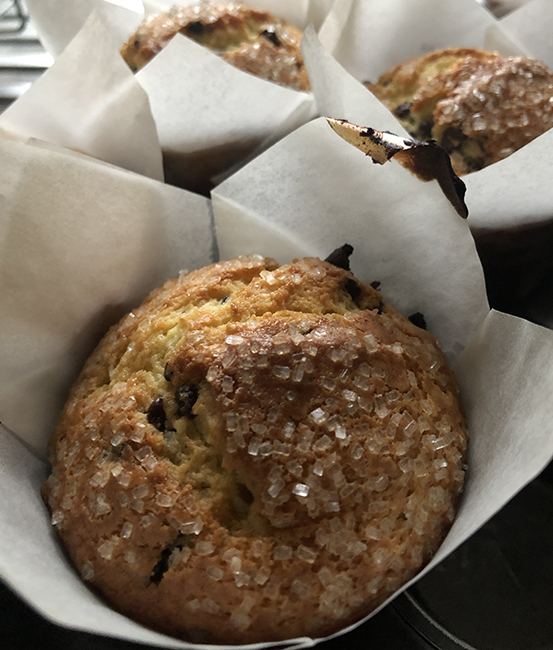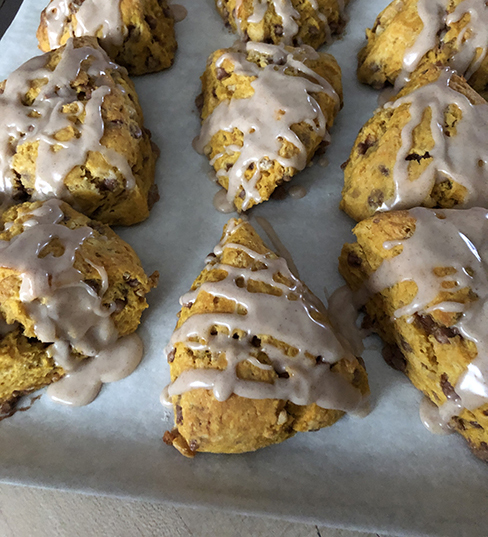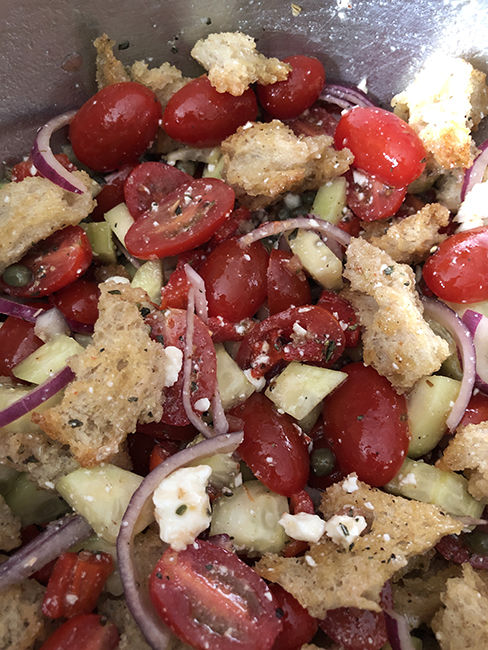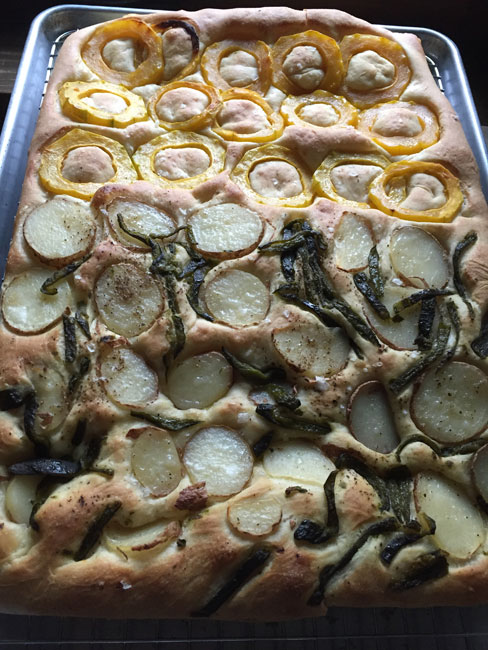
These sandwiches are what we ate for a picnic on Labor Day: The one on the right is a version of Pan Bagnat, kind of a Nicoise salad featuring tuna and tomatoes, on bread, and the sandwich on the left is a vegetarian version with goat cheese, tomatoes, and roasted peppers. Both sandwiches are brushed with olive oil, and spread with oil-poached garlic. If you are a New York Times subscriber you can watch a video by Melissa Clark (it might play for non-subscribers …) that shows her using her 7-year-old daughter to press the sandwich; if you do not have a 7-yo available, you can use a few heavy cans or jars of food. Like the Cowboy Caviar, feel free to adapt to the vegetables you have on hand.
Takes about 30 minutes to assemble, plus one or two hours to press, and optional chilling time
Serves 4-6
For one sandwich/4-6 servings:
1 ciabatta bread* or 4 crusty Kaiser rolls
1-2 whole bulbs of garlic, depending on size
1/4 to 1/2 cup olive oil
1 dried hot chile
1 red bell pepper, sliced into strips
thin slices of red or other onion
2 medium tomatoes, thinly sliced
a handful of basil leaves, torn into pieces
For the tomato-goat cheese variant:
3-4 four ounces goat cheese, softened
1/4 cup roasted red peppers, homemade or from a jar
For Pan Bagnat:
one 6 oz. can oil packed tuna
2 tablespoons capers, drained
1/2 zucchini or summer squash, thinly sliced – about 1/2 cup slices
*If you want to try making the ciabatta, this King Arthur recipe works well. Otherwise Madison Sourdough makes a nice ciabatta and you’ll also find it in any grocery store with a good-sized bakery department.
- Make the oil-poached garlic: separate the garlic cloves, peel them, and place them in a small saucepan with the dried chile. Pour in olive oil to cover the cloves and cook over medium heat for 10-15 minutes, until the cloves are very soft, checking by poking with a fork. Watch closely so it doesn’t brown or burn. Cool, and fish the cloves of garlic out of the oil and mash them with a fork. Reserve the mashed garlic and oil separately.
- Assemble the sandwich(es): Split the bread or rolls. For either variation, start by spreading a good portion of the mashed garlic on the bottoms of the bread. Brush more poaching oil over the garlic, and also brush the tops with oil. For the tomato version, spread goat cheese on the bottom of the sandwich, then layer on the sliced peppers, onion, and roasted peppers. Top with sliced tomatoes and torn basil. For the pan bagnat version, mix the un-drained tuna with the capers, and distribute evenly on the bottom of the sandwich. Shingle the sliced squash over the tuna, layer on the sliced peppers, onion, and top with sliced tomatoes and torn basil.
- Press the sandwiches: put the tops on, and wrap in plastic wrap or waxed paper. Place the sandwiches between two cutting boards (or under one cutting board on the counter, if you don’t have two) and top with a few heavy cans – like 28-ounce canned tomatoes – and press for 1-2 hours. After pressing you can serve immediately or chill for several hours or overnight.
